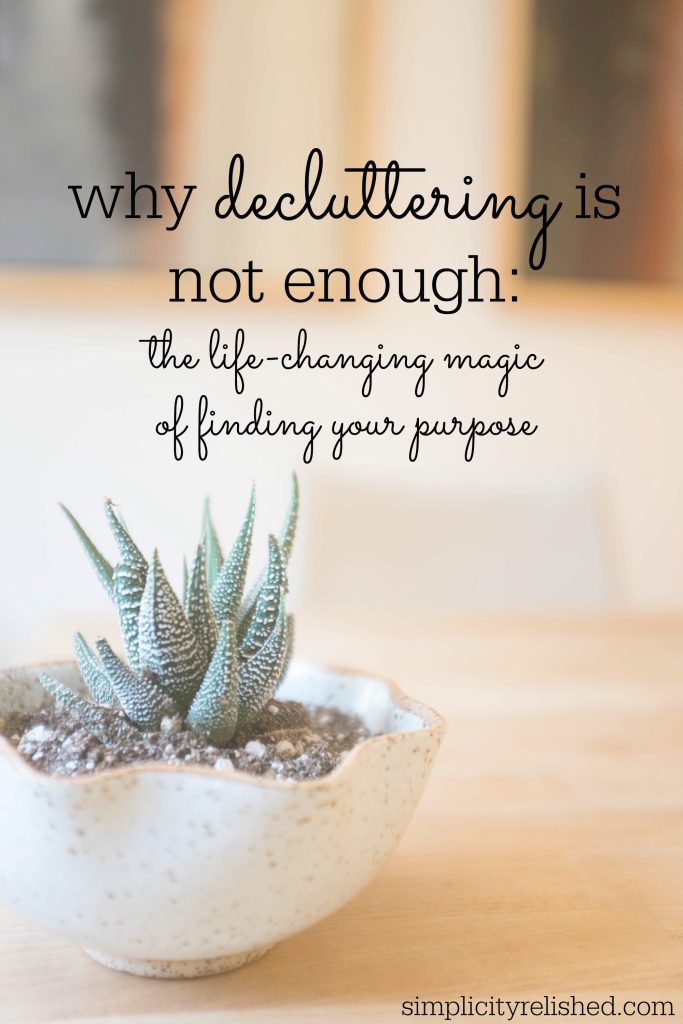Decluttering with Purpose: How to Identify What Truly Matters in Your Life

Embrace the Power of Clutter-Free Living
In today’s fast-paced world, clutter seems to be an unavoidable part of life. However, it often masks what we genuinely value, hindering our ability to live fully and intentionally. The process of decluttering goes beyond just tidying up; it serves as a powerful tool to uncover what truly matters. It not only transforms our physical surroundings but also our mental landscape, allowing for a rejuvenated sense of purpose.
Why Declutter with Purpose?
Finding clarity amid chaos can lead to profound shifts in your lifestyle. Consider these surprising benefits of purposeful decluttering:
- Enhanced focus: A clutter-free environment minimizes distractions, which helps sharpen your cognitive abilities. Studies show that people working in serene spaces report increased focus on personal goals, whether it involves studying for exams, tackling a new work project, or even pursuing hobbies.
- Improved mental health: Research indicates that less clutter correlates with lower levels of anxiety. When our spaces are organized, we feel a sense of calm, creating a mental sanctuary that fosters relaxation and reduces stress. For instance, simply having a clean workspace can significantly enhance your mood and overall well-being.
- Enhanced productivity: A decluttered environment often leads to better efficiency and creativity. Without the physical distractions of unnecessary items, your mind can focus on the task at hand, enabling you to brainstorm ideas or solve problems more effectively. By creating an organized space, many have found themselves more inspired and motivated than ever before.
Identifying What Matters
Determining what to keep or discard is a personal journey. The process of decluttering calls for deep introspection, as you evaluate the significance of each item in your possession. To effectively identify what truly matters, consider the following:
- Emotional significance: Does the item bring joy or important memories? Sentimental clutter can often weigh us down. Reflect on what truly enriches your life; perhaps a family heirloom holds precious memories, while other items may only serve as a reminder of the past.
- Utility: Is it something you use regularly? An effective guideline is the “one-year rule.” If you haven’t used an item in the last year, it may be time to part ways with it. This evaluation can shed light on the practicality of your possessions.
- Future aspirations: Does it align with your goals and values? Ask yourself if the items you keep support the life you want to build moving forward. For example, if you aim to lead a more sustainable lifestyle, consider keeping only items that meet eco-friendly standards.
By approaching decluttering with clarity and intention, you can create a living space that reflects your true self. This procedural journey is not solely about discarding items but rather about embracing an intentional lifestyle. Ready to embark on this transformative journey? Let’s explore actionable steps toward a more meaningful and clutter-free life, which ultimately empowers you to focus on what really matters.
DISCOVER MORE: Click here to unlock emotional decluttering techniques

Uncovering the Essence of Minimalism
As you delve into the process of decluttering with purpose, it’s vital to recognize that discernment is at the heart of transforming your living space. It’s not merely a matter of discarding items; it’s an empowering opportunity to reflect on your life’s values and aspirations. In a culture that often glorifies consumerism, learning to prioritize what’s essential encourages a deeper understanding of yourself and your goals.
The Emotional Connection
To effectively declutter, begin by considering the emotional significance of your belongings. Items that evoke strong feelings can complicate your decision-making process. Engage in a reflective practice to evaluate each object. Ask yourself:
- Does this item spark joy? This question, popularized by Marie Kondo, can serve as a powerful litmus test. If the answer is no, it might be time to let go.
- What memories does this item hold? While mementos can have attached memories, it’s important to differentiate between cherished memories and emotional baggage. Identify which items genuinely resonate with you.
- Is this connection uplifting or burdensome? Sentimental items should inspire positivity rather than evoke sorrow or regret. Letting go of what weighs you down is essential in creating an uplifting environment.
Analyzing Usability and Functionality
Next, assess the utility of your possessions. The “one-year rule” is a simple yet effective guideline to determine if an item merits your space. Examine whether you’ve utilized each object over the past year. Regularly-used items tend to have a clear purpose in your life, while those collecting dust may be better off donated or discarded. This practice encourages a lifestyle of intentionality and practicality.
Aligning with Your Aspirations
Finally, consider how your possessions align with your future aspirations. Each item in your home should be a reflection of the life you wish to create. Take some time to envision your goals and values. For instance, are you striving for a simpler, more sustainable lifestyle? If so, evaluate whether your belongings support this objective. As you sift through your items, ask yourself:
- Does this item embody my current values? If it doesn’t align with where you see yourself heading, it may no longer serve you.
- Am I holding onto items out of obligation? Many people keep items because they feel guilty about letting them go, but freeing yourself of such burdens can be a pivotal step in your decluttering journey.
By engaging in this reflective process of identifying what matters, you can cultivate a space that resonates with your true self. Decluttering is not a race; embrace the journey as you redefine your surroundings, creating an atmosphere that inspires growth and intention. With this deeper understanding, you’re better equipped to move forward, cultivating not just a space free from clutter, but a life filled with purpose.
| Advantage | Impact |
|---|---|
| Clarity in Values | Identifying what truly matters allows you to focus your energy on your core values, fostering a more fulfilled life. |
| Enhanced Decision-Making | With a clear understanding of priorities, your ability to make timely and informed decisions improves, leading to a more efficient lifestyle. |
| Stress Reduction | Decluttering your surroundings reduces mental clutter, which can significantly lower stress levels and enhance your overall well-being. |
| Fulfillment and Happiness | Focusing on what truly matters can lead to greater personal satisfaction, fostering lasting happiness in everyday life. |
In pursuit of a simplified yet meaningful existence, determining priorities can profoundly impact various aspects of life. When individuals can cut through the noise and streamline their possessions, they’re not just choosing items to keep or discard; they’re embracing a philosophy that prioritizes meaningful experiences and cherished relationships. Additionally, creating a space free from excess can result in enhanced creativity and clarity. It allows for a rejuvenated perspective on life’s challenges and promotes a healthy mental state. Consider how minimalism can reshape your goals. Each decision about what to keep or let go should reflect your core beliefs, ensuring your space is a true reflection of your journey toward selective living.Moreover, by engaging in the process of decluttering, individuals become more conscious consumers, making well-informed choices that align with their values, ultimately reinforcing the commitment to a life filled with purpose.
DISCOVER MORE: Click here to learn how to delegate effectively
Creating a Personalized Decluttering Strategy
Once you have reflected on the emotional significance, usability, and alignment of your possessions with your future aspirations, it’s time to develop a personalized decluttering strategy. This approach ensures that you aren’t simply clearing out items haphazardly but rather engaging in a thoughtful and meaningful process that resonates with your personal journey.
Setting Clear Goals
Begin by establishing clear decluttering goals that reflect your intentions. Instead of vague ambitions like “I want to be less cluttered,” try to articulate specific outcomes. For instance, you might set a goal to create a minimalist workspace that enhances productivity, or to establish a serene bedroom environment free from distractions. SMART goals (Specific, Measurable, Achievable, Relevant, Time-bound) can provide structured guidance throughout this process. Aim for attainable objectives to keep you motivated and focused.
Implementing Practical Techniques
With goals set, it’s time to employ practical decluttering techniques. Here are some effective methods to consider:
- The Four-Box Method: As you work through each room, label four boxes: keep, donate, trash, and rethink. This system encourages you to categorize each item clearly, reducing decision fatigue.
- Room-by-Room Approach: Tackle one room at a time, which can make the process less overwhelming. Focus entirely on a specific environment to cultivate a sense of achievement before moving on to the next space.
- Donation Zones: Set up designated areas in your home for items to donate. This not only keeps the process organized but also serves as a visual reminder of your decluttering purpose.
Employing these strategies makes decluttering more manageable and less introspective chaos, enabling you to maintain focus on what truly resonates with your aspirations and values.
Establishing Maintenance Habits
To ensure that your newly clutter-free space remains that way, it’s crucial to establish maintenance habits. Here are some practices that can help sustain your organized environment:
- One In, One Out Rule: For every new item you bring into your home, consider letting go of something else. This helps prevent future accumulation of unnecessary possessions.
- Daily Declutter Sessions: Dedicate just 10-15 minutes each day to assess a specific area or category of items. This consistent practice reinforces your intention of minimalism.
- Regular Review Cycles: Schedule quarterly or biannual reviews of your belongings. This committed practice ensures that your space continues to align with your changing lifestyle and aspirations.
These small, consistent efforts go a long way in preserving clarity and intention within your living space.
Finding Support in the Journey
Finally, don’t shy away from seeking support. Engaging friends or family in your decluttering journey can be both motivational and therapeutic. Share your goals and experiences, and perhaps tackle a decluttering challenge together. Additionally, consider joining online communities or local workshops focused on decluttering and minimalism. These platforms can offer encouragement, ideas, and insights from like-minded individuals, enriching your experience further.
By crafting a personalized strategy that includes setting clear goals, employing practical techniques, establishing maintenance habits, and seeking support, you can effectively navigate the decluttering process with intention. This transformation will guide you toward a space that nurtures your growth, aspirations, and authentic self.
DISCOVER MORE: Click here for creative storage solutions
Embracing a Life of Intention
In conclusion, decluttering with purpose is much more than merely organizing your space; it’s a transformative journey toward identifying what truly matters in your life. As we explored, the process begins with reflection and emotional evaluation of our possessions, ensuring that each item aligns with our aspirations and values. By incorporating effective strategies such as setting SMART goals, utilizing practical decluttering techniques, and establishing sustainable maintenance habits, we empower ourselves to create an environment that nurtures our growth and clarity.
Moreover, connecting with a community or seeking support can add layers of motivation and shared experiences, ultimately enriching the decluttering process. In a world increasingly filled with distractions and noise, the act of intentionally choosing what to keep in our lives fosters not just physical space but also emotional and mental clarity.
As you embark on your own journey, remember that decluttering is ongoing. It’s about cultivating a harmonious space that reflects your true self and accommodating your evolving needs. Take a moment to evaluate your belongings regularly, and engage with practices that resonate with you. In this way, you are not just clearing out clutter but crafting a life that embodies intention, purpose, and authenticity.
So ask yourself: what truly matters? The answer lies in the thoughtful and conscious choices you make as you navigate your unique path. Embrace this journey, for it holds the potential to reveal a life of simplicity, focus, and profound fulfillment.


